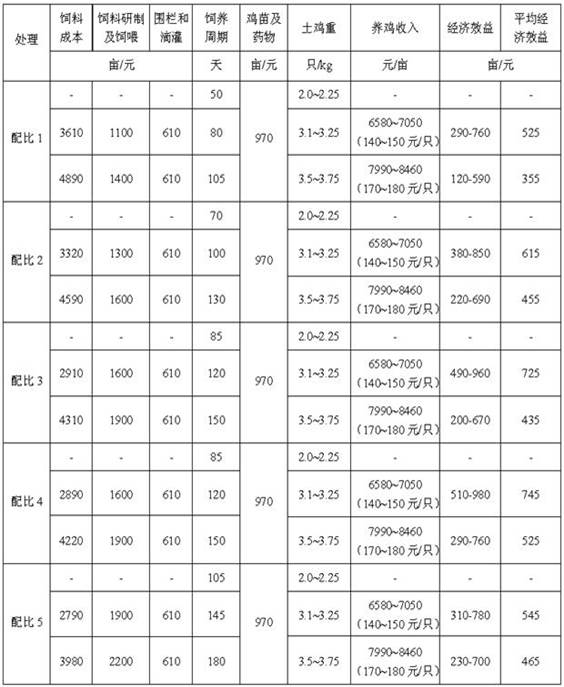Method for breeding ecological chickens in desert oasis sand wasteland
A technology of oasis sand and ecological chicken, which is applied in the field of livestock and poultry breeding, can solve the problems of large economic investment and long feeding cycle, and achieve the effect of solving low benefit, reducing feed cost and improving quality
- Summary
- Abstract
- Description
- Claims
- Application Information
AI Technical Summary
Problems solved by technology
Method used
Image
Examples
Embodiment 1
[0044] Embodiment 1: the economic benefit comparison under different farmland breeding patterns, determine the feeding place of farmland breeding, its specific experimental design is as follows:
[0045] At the Linze Station of the Chinese Academy of Sciences in Linze County, Zhangye City, Gansu Province, research on the economic benefits of corn fields, sweet sorghum fields, sunflower fields, and vegetable fields was carried out to determine better breeding sites under different farmland farming models. The research area is located in the middle of the Hexi Corridor, on the edge of the desert oasis, and the soil used for the test is irrigated aeolian sandy soil with a bulk density of 1.40 g·cm -3 , the field water capacity is 18.4%, and the soil structure is poor. After testing: the sand and silt particles in the 0-20 cm sand layer of the tested soil are more than 80%; the organic matter content is 1.44%, and the organic matter content gradually decreases with the depth of th...
Embodiment 2
[0058] Embodiment 2: excellent forage grass screening, determine the forage grass species of farmland cultivation, its specific experimental design is as follows:
[0059] The plant materials used for the test were the 1-year-old plants Agarina spp. and Halophylla saline (collected in early October), which are widely distributed in the surrounding area of the farmland at the Linze Station of the Chinese Academy of Sciences, and the weeds in the farmland (before the seeds fall off) and crop waste. Bean crop stalks and corn cobs, etc., collected the aboveground parts of each plant sample, at least 20 plants of each plant, brought back to the laboratory after collection, rinsed with water, and put them in an oven at 85°C for 3 days, crushed and evenly mixed for 2 days. mm sieve for analytical determination. The nutrient contents of different forages are shown in Table 3.
[0060] Table 3 Analysis of nutrient content of different forage grasses
[0061]
[0062] Note: Data ...
Embodiment 3
[0064] Embodiment 3: adopt granular feed of the present invention, compare the economic benefit under different feed ratios, determine the best feed formula, its specific experimental design is as follows:
[0065] Corn and sweet sorghum are used as breeding places, drip irrigation is used, and the corn and sweet sorghum are stocked when they grow to 50-60 cm (chicken selection and domestication before stocking are the same as in Example 1), and the feed formula is corn Seeds, bean cake, hemp dregs, sweet sorghum stalks, bean crop stalks, quinoa, gray strips, white stem salt grass, calcium phosphorus, vitamins and attapulgite. Before stocking, the forage grass is first crushed, and then the pellet machine is used to make pellet feed with different proportions.
[0066] The first month after stocking is mainly fed with concentrate (corn seeds, bean cakes, slag, vitamins, calcium phosphorus, attapulgite are mixed at 70:20:5:2:2.5:0.5), and after one month of stocking, set the fo...
PUM
 Login to View More
Login to View More Abstract
Description
Claims
Application Information
 Login to View More
Login to View More - R&D
- Intellectual Property
- Life Sciences
- Materials
- Tech Scout
- Unparalleled Data Quality
- Higher Quality Content
- 60% Fewer Hallucinations
Browse by: Latest US Patents, China's latest patents, Technical Efficacy Thesaurus, Application Domain, Technology Topic, Popular Technical Reports.
© 2025 PatSnap. All rights reserved.Legal|Privacy policy|Modern Slavery Act Transparency Statement|Sitemap|About US| Contact US: help@patsnap.com



